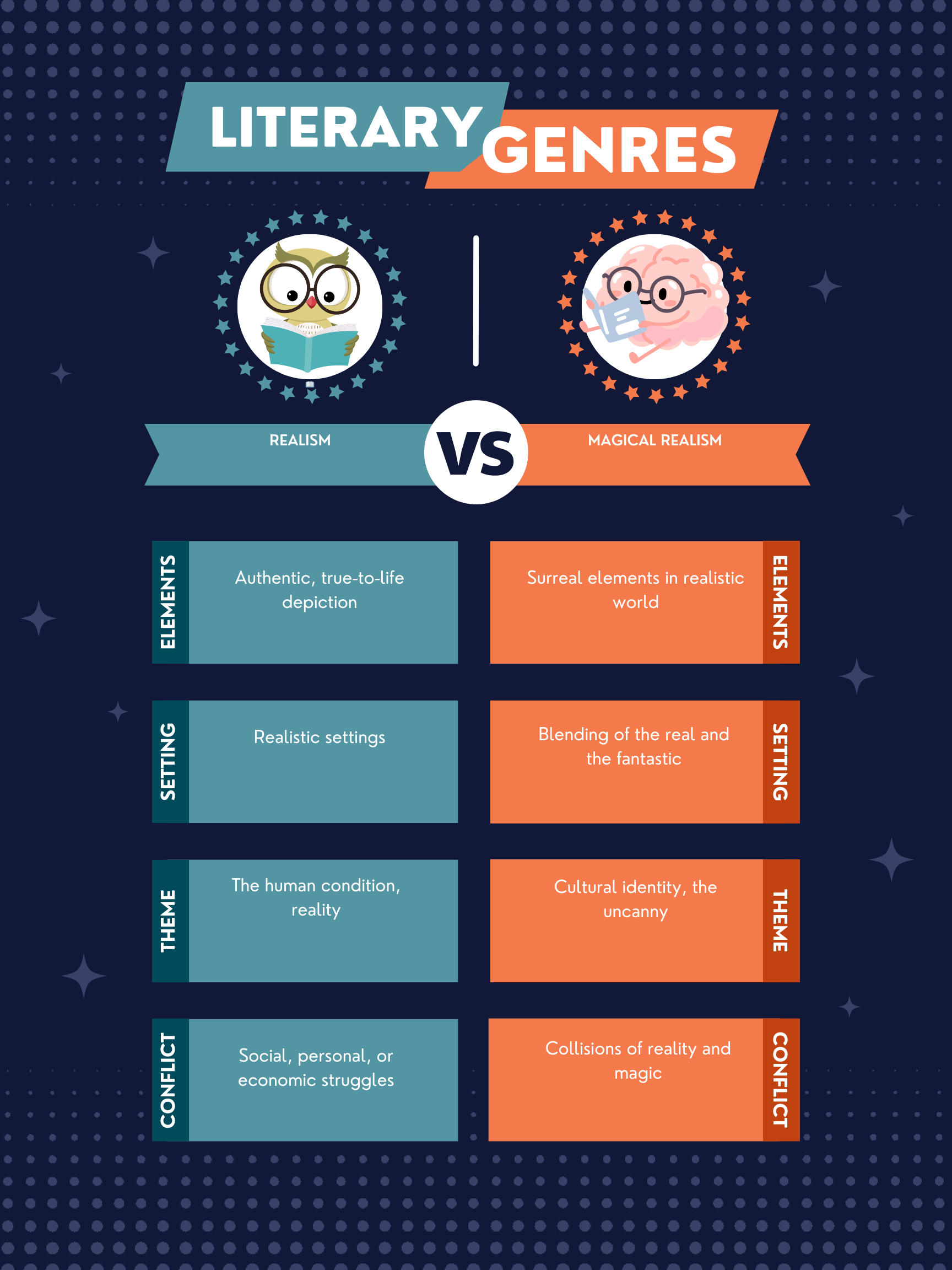Realism aims to represent life as it is; Magical realism incorporates magical elements into otherwise realistic settings.
Realism 🏙️
Realism is a literary movement that strives to depict life accurately without idealization or romantic subjectivity. It focuses on everyday activities and experiences, grounded in factual accuracy and detail. For example, Gustave Flaubert’s Madame Bovary portrays the life of a doctor’s wife and her adulterous affairs in a detailed, realistic manner, highlighting the characters’ emotional struggles and social contexts.
Magical Realism ✨🌍
Magical realism, on the other hand, blends magical elements with a realistic setting, creating a world where the extraordinary meets the mundane. This genre often explores the uncanny residing within the ordinary and the complexities of human experience. Gabriel García Márquez’s One Hundred Years of Solitude is a prime example, weaving together the history of the Buendía family with fantastical elements, like a girl who ascends to heaven while folding laundry.
Summary
| Literary Device | Definition | Purpose | Usage | Relevant Examples |
|---|---|---|---|---|
| Realism | Accurate depiction of everyday life | To mirror reality and explore societal norms | Novels, short stories focusing on real-life situations | Madame Bovary by Gustave Flaubert |
| Magical Realism | Realistic settings with magical elements | To explore the extraordinary within the mundane | Fiction that blends the real with the fantastic | One Hundred Years of Solitude by Gabriel García Márquez |
Writing Tips
- For Realism: Focus on detailed character development and settings that reflect the complexities of real life. Research and observation are key to capturing the essence of your subject matter authentically.
- For Magical Realism: Allow your imagination to infuse the ordinary with enchantment. However, keep the narrative grounded with relatable characters and settings. The magic should feel as natural as the realism in your story.
FAQs
Q: Can a work of fiction be both realistic and magical?
A: Yes, magical realism itself is a testament to how stories can blend the real with the supernatural seamlessly.
Q: How do I know if my story is better suited for realism or magical realism?
A: Consider your narrative goals. If you aim to explore human experiences and social issues through a grounded lens, realism is your go-to. If you wish to add layers of wonder or explore themes beyond the tangible, magical realism might be the path.
Q: Is magical realism just fantasy?
A: No, magical realism is distinct from fantasy. While both genres include magical elements, magical realism specifically integrates these into realistic settings, emphasizing a seamless blend rather than creating entirely new worlds.
Exercise
Identify whether the following sentence is an example of realism or magical realism:
“After Maria turned off the bedside lamp, her shadow remained on the wall, silently whispering the day’s secrets.”
Answer: Magical realism.
Other Device Comparisons You May Find Interesting
- Science Fiction vs Fantasy: Exploring the boundaries of reality and imagination.
- Historical Fiction vs Alternate History: Rewriting the past with facts and fiction.
- Tragedy vs Comedy: The spectrum of human emotions through storytelling.
- Narrative Fiction vs Non-fiction: Distinguishing fact from fiction in storytelling.
Exploring these literary devices further enriches our understanding of storytelling’s power and the diverse ways it can capture the human experience.

